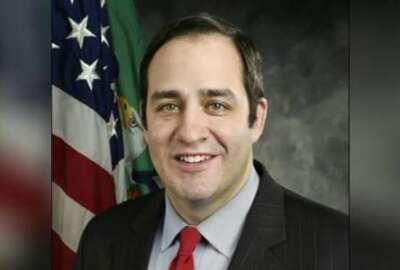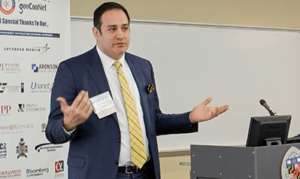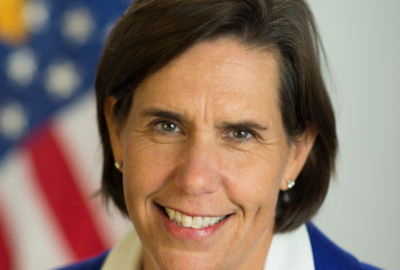
HHS, CMS following the two ‘Cs’ of IT modernization: Customers and cost cutting
Rajiv Uppal at the Centers for Medicaid and Medicare Services, and Jose Arrieta at HHS said bringing the mission offices into the IT modernization discussion is...
When the Department of Health and Human Services transforms its back office and mission technologies two themes emerge.
The first is more typical of an IT modernization effort — consolidation and reduction of systems and contracts. The second theme is less concrete with a focus on both internal and external customers.
Rajiv Uppal, the chief information officer at the Centers for Medicaid and Medicare Services, said his IT modernization strategy leans toward the second theme. CMS builds and updates many of its IT systems and applications in house.
“How do we get our folks in CMS who are building systems for our citizens and internal systems as well to focus on the customer? That has been one of our key initiatives. To enable that, we’ve focused on human-centered design,” Uppal said at the AFCEA Bethesda Health IT day in January. “In almost everything that we do, human-centered design is a central component and we start with that.”
Uppal said to get humans at the center of CMS’ IT development operations, he has implemented agile methodology.
“Most of our teams are putting on and taking on a product mindset as opposed to project mindset,” he said during the panel, which was recorded as part of the Ask the CIO program. “When it comes to projects, we focused on milestones and outputs. When it comes to products, it’s more about outcomes. What are we going to produce and how is that going to appropriately serve the needs of the customer?”
For Jose Arrieta, who became the CIO at HHS in May, the customer, too, is critical but in the short term IT modernization was more about cutting costs.

“If I want to move into artificial intelligence or any type of machine learning capability, I have to create some creditability with our customer base and, in particular, the different funding functions that exist in our agency,” Arrieta said on the panel. “We’ve cut $20-to-$25 million out of our operating costs. We’ve tried to cut out layers of overhead. We’ve tried to focus in directly on the customer and move the customer to the center of everything we do with the idea of standardizing the way we do business on different platform capabilities that we currently have and then sharing those platform capabilities across our customer base to actually push our costs down.”
He said one example of this idea of cutting costs and standardizing across a platform is happening through the Enterprise Infrastructure Solutions (EIS) contract.
HHS took 12 different contracts and consolidated them into one. Arrieta said the agency will make an award in the coming months.
“In doing so, although it’s a huge shift for the agency, the eight functional areas that we will pick up in our program management office that the General Services Administration used to perform and service are going to give us technical flexibilities in the way GSA structured the contract,” he said. “We will be able to allow, for example and I’m making this up, CMS to bring on 5G capabilities. But we will be able to look at it from the totality of the department and see how it could impact technical delivery across the entirety of the department.”
Arrieta said all of these efforts are to make sure the customer offices understand what services they are receiving for the money they are spending on IT.
Mission areas more engaged
Uppal said getting the customer to understand what they are buying is part of CMS’ move to user-centered design.
He said as soon as a system or application needs to be updated, his office starts asking questions about the current and future capabilities.
Read more: Technology News
“We ask for some wire frames. If they don’t have, we help them build the wire frames,” Uppal said. “The point of wire frames is you build one and then talk to the stakeholders who will be using the system and you get immediate feedback. That conversation with the stakeholders using wire frames is a big eye-opener to most people who are building systems. It leads to building systems that eventually will better serve the customers you are building those systems for.”
Additionally, the CMS mission areas feel more engaged and that the CIO’s office is listening to them more.
Arrieta said that trust is important to move IT modernization further faster. By consolidating contracts and IT systems, Arrieta hopes more mission offices will use the shared platforms, thereby lowing the price everyone pays for the 28 different services.
“We expect that they will go spend those savings on their mission space, but we have no authority to dictate how the programs do that,” he said.
But what Arrieta can do is offer services that mission areas are excited about.
He said one of those is using procurement data to continue lower costs and creating a standard configurations for products, which will specifically improve HHS’s cybersecurity.
Arrieta said HHS will test out this approach with a vendors — he didn’t say which one — to create a single portal to buy software licenses. He estimated HHS will save $33 million to $40 million over the next five years and will lower the burden on the workforce.
“We are taking that dataset that exists within HHS Accelerate and have built a couple of neural networks off of it and we are analyzing prices paid and terms and conditions. We are looking at price differential and using that to have a friendly conversation with our industry partners who service us through licenses. We want to get our costs down and less our administrative burden and we have a lot of data to prove this so we want them to work with us. We have our first one, which isn’t awarded yet, but do expect to award it within the next month and will continue with eight or nine other opportunities.”
Copyright © 2025 Federal News Network. All rights reserved. This website is not intended for users located within the European Economic Area.
Jason Miller is executive editor of Federal News Network and directs news coverage on the people, policy and programs of the federal government.
Follow @jmillerWFED
Related Stories

For HHS, FITARA is not just a law, but a lifestyle






